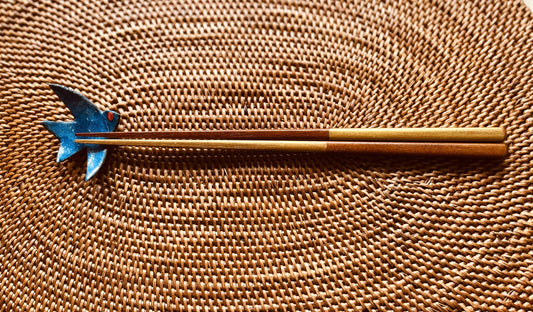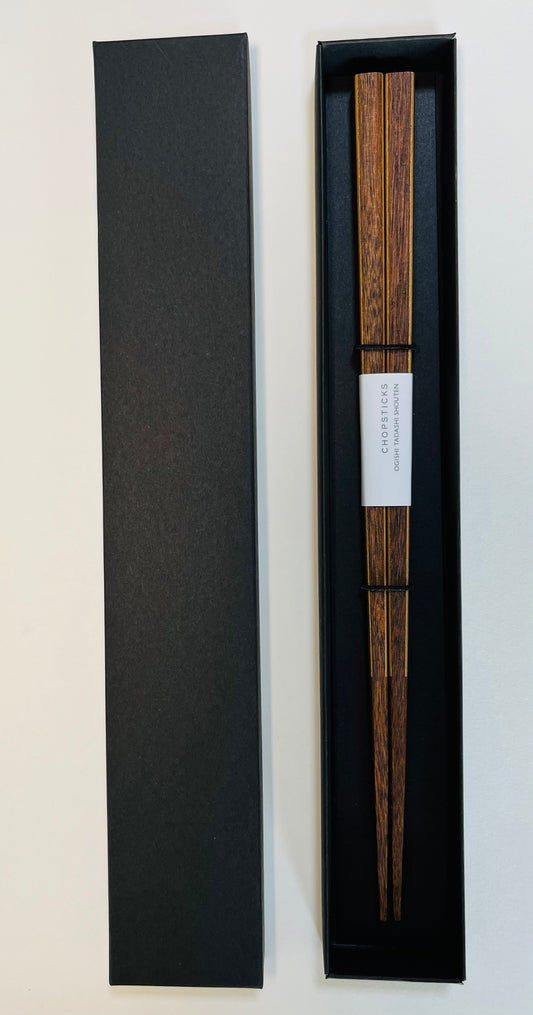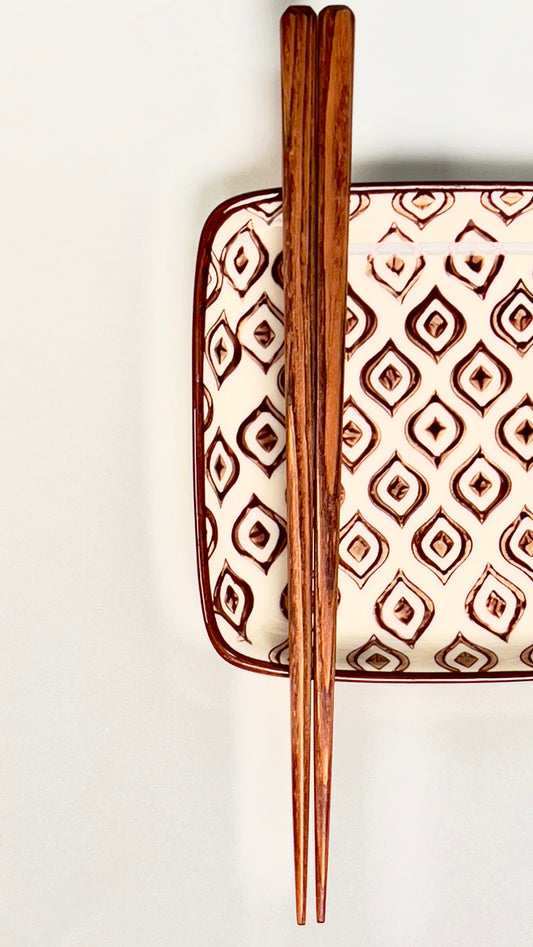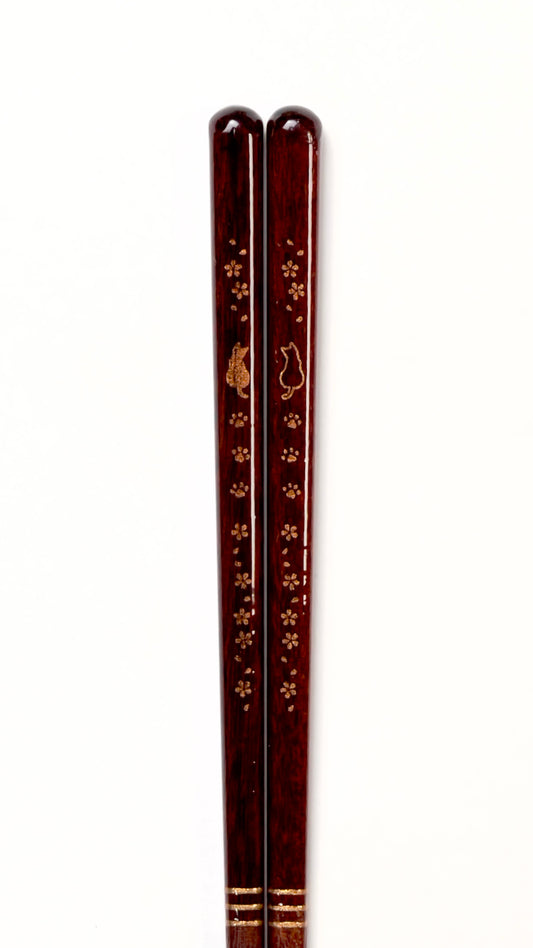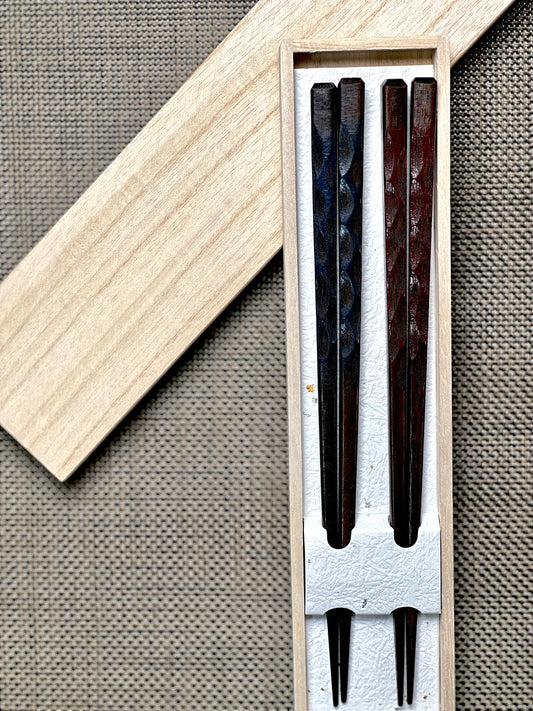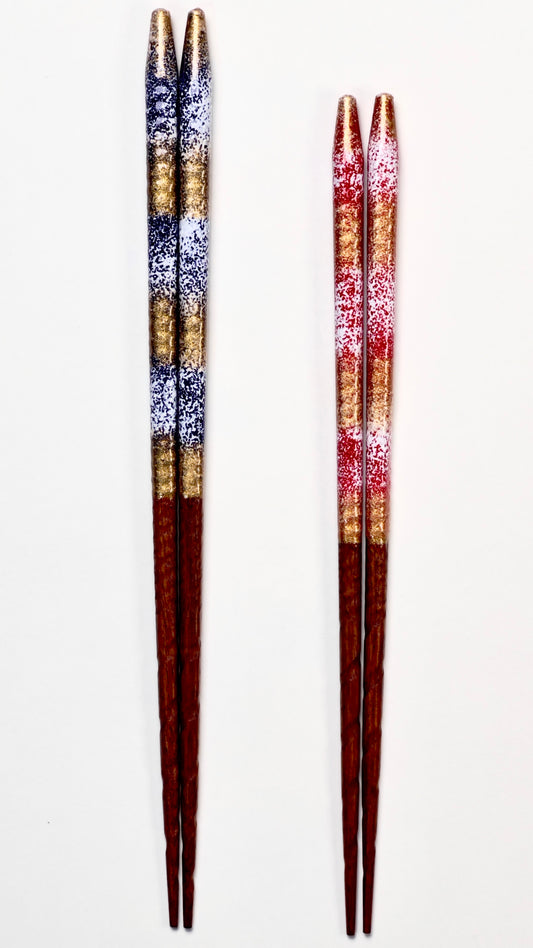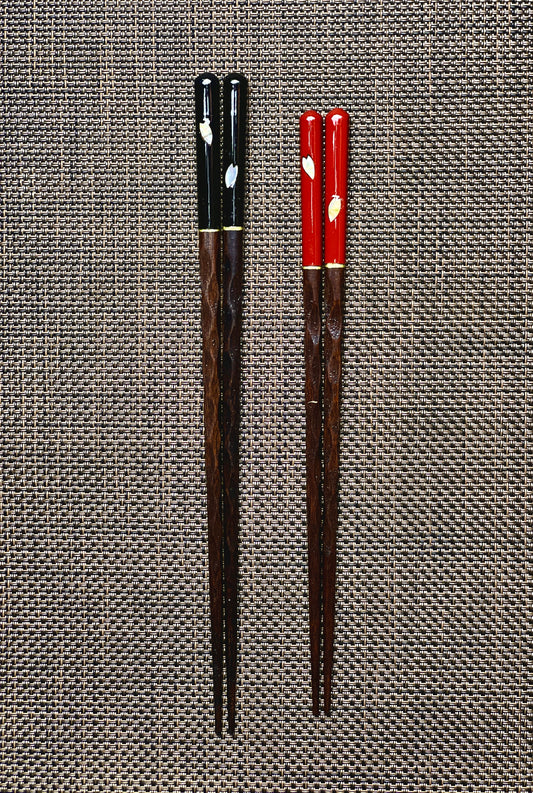Kokoelma: Wakasa Lacquerware
Wakasa lacquerware is originated from Obama, a port town in Fukui, Japan and the regions that surround the town. Its history dates back to the early Edo period , when a craftsman from the Obama Clan, wanted to design a chopstick that depicted the beautiful seascape seen from the bottom of the ocean of the Wakasa Bay.
Wakasa lacquerware is famous for the togidashi technique in which patterns are created using seashells and pine leaves, gently coated with lacquer and then polished. This technique gives the lacquerware a unique style, dignity, and artistic feature. Wakasa chopsticks are known for their resistance to water and heat, and they account for about 80% of all the lacquered chopsticks produced in Japan. Another unique characteristic of Wakasa-nuri chopsticks is in the fact that each craftsman's individuality is strongly reflected in the work, as all processes are carried out by a single artisan, rather than through division of labor.

